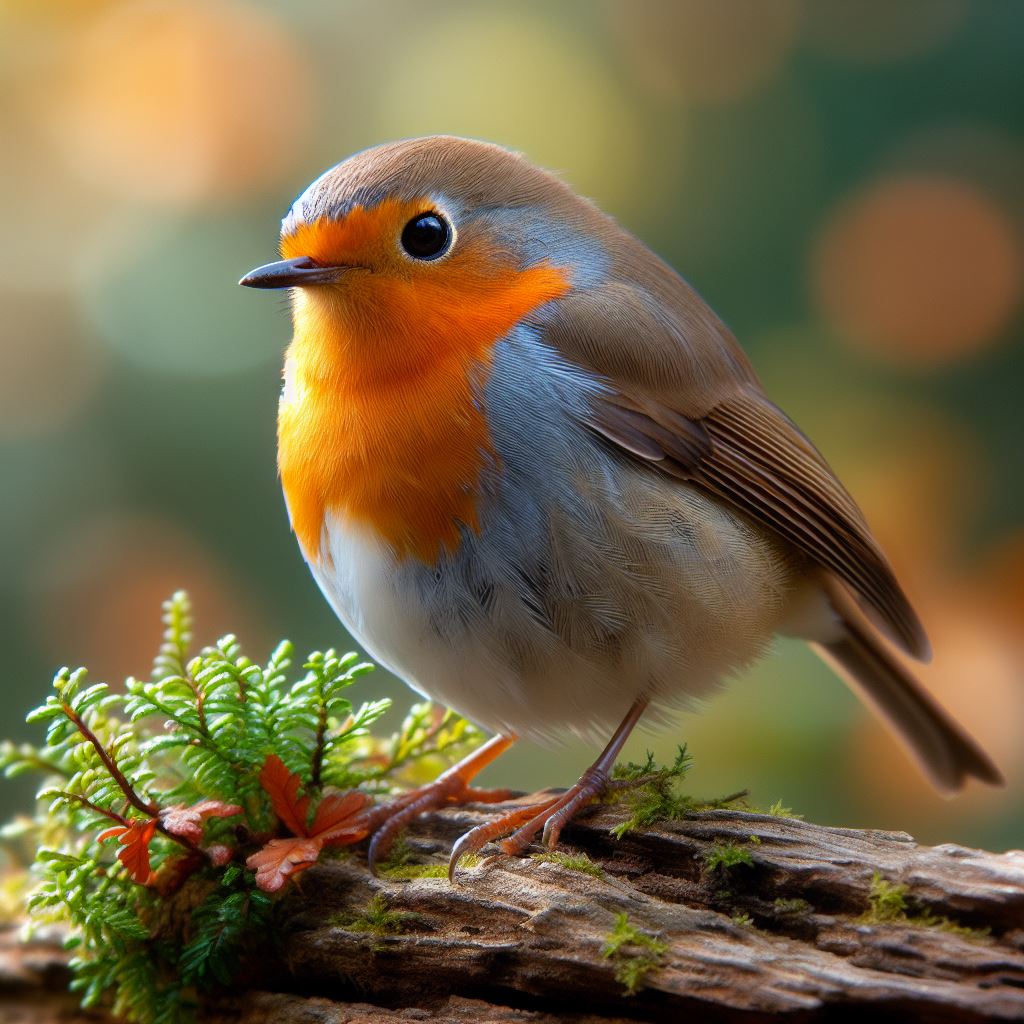Most beautiful small birds - Sykalo Eugen 2024
European Robin (Erithacus rubecula)
Identification:
- Species name: European Robin, Robin
- Scientific name: Erithacus rubecula
- Family: Turdidae (Thrushes)
- Order: Passeriformes (Songbirds)
- Subclass: Neornithes (Modern birds)
- Class: Aves (Birds)
Description:
- Size: Small songbird, about 14-16 cm (5.5-6.3 in) long with a wingspan of 21-23 cm (8.3-9.1 in).
- Body shape: Round and plump, with a short neck, a plump chest, and a slightly upturned tail.
- Plumage color:
Bright orange-red breast and throat, sharply contrasting with slate-grey upperparts.
Black face and crown.
Pale grey underbelly.
Black legs.
Dark eyes.
Short, dark brown beak.
- Beak: Short, black, and slightly downcurved, perfectly suited for gleaning insects and berries.
Behavior:
- Method of feeding: Omnivorous, foraging for insects, worms, berries, and fruits. Often hunts by hopping and perching on low vegetation.
- Reproduction: Builds cup-shaped nests in trees, bushes, or even human-made structures. Lays 4-6 pale blue eggs with reddish markings. Both parents care for the young.
- Movement: Resident in most of its range, with some dispersal in response to cold weather.
- Communication: Loud and melodious song, with clear whistles and trills. Males sing throughout the year, even in winter, to defend territory and attract mates.
Ecology:
- Habitat: Woodlands, gardens, hedgerows, parks, and other areas with trees and bushes.
Can adapt to urban environments and readily visits gardens.
- Diet: Insects, worms, berries, fruits, and seeds.
- Hunting methods: Forages actively on the ground and in low vegetation, hopping and perching, and gleaning insects and berries.
Distribution: Found across Europe and parts of Asia and North Africa.

The European Robin, that cheerful splash of orange on a wintery landscape, might seem like a familiar garden visitor at first glance. But beneath its vibrant breast and territorial tendencies lies a treasure trove of fascinating facts and adaptations that will leave you charmed by this feathered champion of resilience and song.
Masters of Territory: Robins are fiercely protective of their turf. Males sing loud, complex songs to warn rivals and attract mates, often perching on high branches to claim their domain. Imagine them as feathered opera singers with built-in loudspeakers!
Unexpected Night Singers: Don't be surprised to hear their melodious voices after dark! Robins sometimes sing at night, especially during the breeding season, making them one of the few European birds to serenade under the moonlight. Talk about feathered nightingales with built-in moonlight serenades!
Unexpected Cold Warriors: While many songbirds migrate south for the winter, Robins choose to tough it out in colder climates. Their thick feathers and efficient metabolism allow them to survive in freezing temperatures, adding a splash of orange to the snowy landscapes. Think of them as feathered polar bears with built-in winter jackets!
Hidden Insect Hunters: Don't be fooled by their charming demeanor; Robins are skilled predators. They use their sharp beaks and quick reflexes to catch a variety of insects, worms, and other invertebrates, keeping garden pests in check and adding a touch of feathery acrobatics to the air. Talk about feathered ninjas with built-in miniature flyswatters!
Symbiotic Symphony: Robins play a vital role in the ecosystem. By controlling insect populations, they help maintain the health of forests and gardens, contributing to a balanced natural symphony. These feathered pest controllers contribute to the flourishing of plants and other creatures.
Cultural Charmers: For centuries, the Robin has held a special place in European cultures. It appears in folklore, songs, and even Christmas traditions, often symbolizing happiness, hope, and new beginnings. It's a testament to the enduring fascination we have with this cheerful and resilient bird.
Unexpected Mimus: Robins are talented mimics! They can incorporate the calls of other birds into their own songs, sometimes even deceiving predators with their impressive vocal repertoire. Imagine them as feathered ventriloquists with built-in sound effect libraries!
Feathered Fashion Chameleons: Did you know? Not all Robins have the same shade of orange! Their breast plumage can vary from bright reddish-orange to more subdued brown-orange depending on their geographical location and age. Talk about feathered fashion chameleons with built-in color palettes!